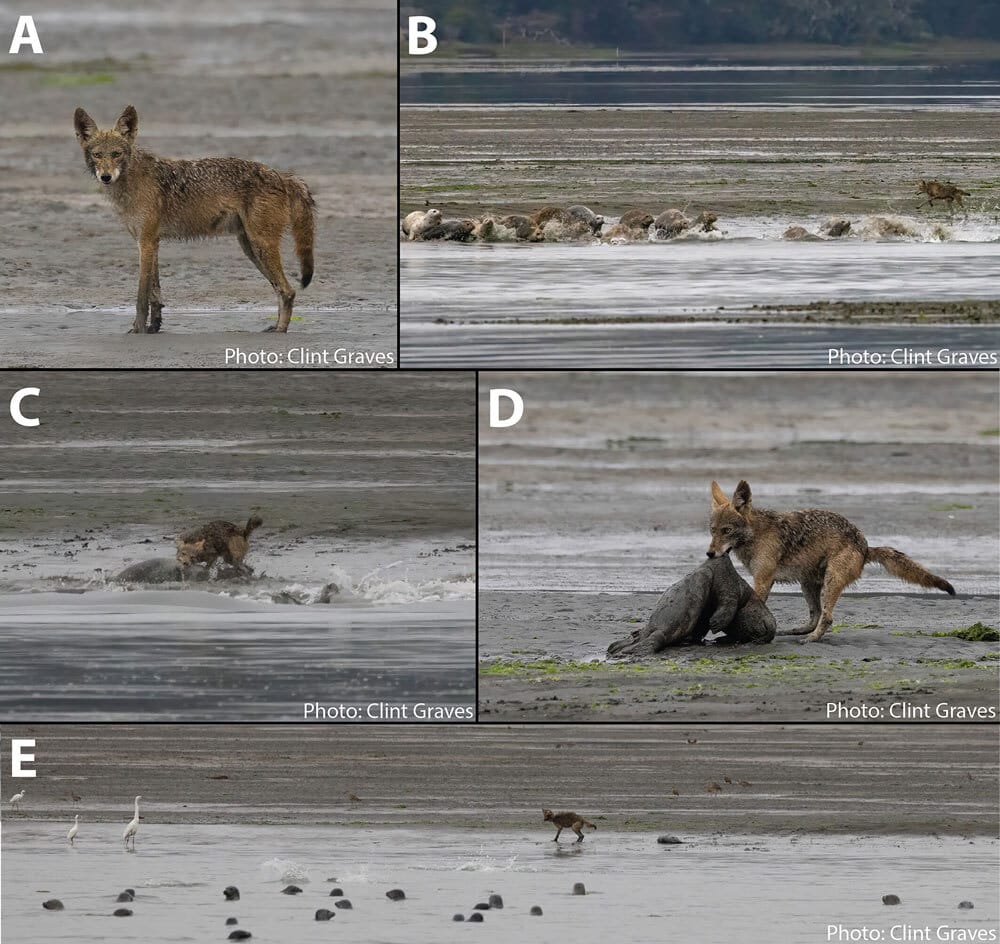
Photo: Clint Graves
With the bodies of baby seals strewn across many of the beaches of northern California, one team of researchers was looking for specifics when it came to figuring out who and what was responsible for the blood letting.
With an absence of notable predators such as bears and wolves along much of California’s coast, researchers started looking for answers as the bodies of baby seals started to pile up. With tracks and drag marks across the sandy beaches, researchers had their suspicions, but could not confirm the presence of coyotes. In an effort to get to the bottom of it, one research team deployed a number of cameras to specific locations in hopes of catching their culprit in the act.
Their paper, which was published earlier this month in the journal Ecology goes on to state that researchers used motion-triggered cameras at MacKerricher State Beach during harbor seal pupping season in the spring of 2023 and 2024. With reports of over 50 pups found dead along that very same beach, UC Santa Cruz Ph.D. student Frankie Gerraty, who led the study, soon found that it was coyotes who were responsible for the killings.
“I had a hunch it was coyotes,” Gerraty said. “Terrestrial wildlife that eat seafood are a major focus of mine, and we know that coyotes are very adaptable.”

Photo: Clint Graves
As per their findings, Gerraty and his team noted that the coyotes would eat the brain of the seal pups first, removing their heads to get to it. Opportunistic in nature, coyotes have flourished in California over the past century and are seemingly filling the void of other natural predators on the landscape.
The concern many, including biologists and other researchers have is how this behavioral shift will affect the harbor seal and other populations of pinnipeds across the state. Learned behavior can lead to devastation when it comes to predators such as coyotes who will continually return to a site for an easy and satisfying meal. Hearty in nature, the blubber of harbor seals is incredibly nutritious and researchers worry that the added energy levels would lead to increased breeding productivity and a shift in range.
Land-based predation undoubtedly affects where seals raise their young. In a time when bear and wolf populations were high, seals opted to raise their young on islands rather than on the mainland.

Concentrating around rookery sites (a place where seals gather to breed, birth and rest), the research also indicated that a number of other species actually benefit from the carnage caused by coyotes. Noting that bald eagles, vultures and other scavengers would then feed on the carcasses left by the ‘yotes, the research team went on to state that, at the moment, this all seems to be quite natural in progression.
With neither species of any legitimate conservation concern, it seems as though the pups are serving as a great springtime food source for coyotes and other local species. While other studies in Washington state and Massachusetts have recorded similar predation events, it’s worth noting that harbor seals at MacKerricher State Beach have been decreasing since 2018.
With few studies highlighting this unique predator-prey link, Gerraty and other researchers are hopeful that their data and findings will go on to shape the future management of these coastal ecosystems.

